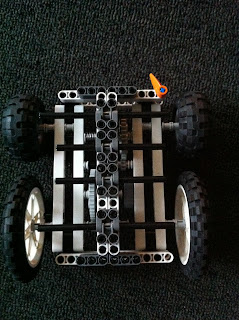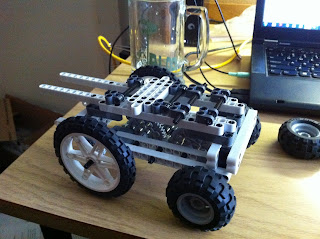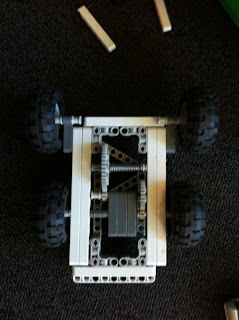Taking the lessons learn from Mark 2 and applying them to work on the Mark 3 the chassis started to take shape. One thing that was learned during the adaptation of mark to was that the with the new gear ratio we would need more room because the 40 tooth gear took up more space. In order to compensate for this I made the members that were perpendicular to the chassis more space efficient while still trying to make the structure more rigid. It was very important to consider torsion as a lack of rigidity would create jacking on one side of the car causing it to go sideways, lowering accuracy and precision. In addition to those supports a superstructure was added to add anti-torque members. This was modeled and inspired by cars and how their under carrive which is shaped like and 'I'. With the addition of these things the Mark three was able to go farther than any of it's predecessors..
One draw back though is that in order to keep the drive train on on on lego beam (which was a problem of the Mark 2 adaptation) there were less places to ad support so the car didn't go nearly as straight as one would hope.
To compensate for that many other truss systems were added, but it only ended up doing more harm in creating gear binding than good so it was decided to move the extra systems unless the jacking became really bad. Even though it didn't exactly track straight, this is only in the first few feet of travel which means that if you angle the car it has more than enough travel to go the 15 and straighten out too. The turning problem was also partially rectified by adding a slight indicator part as a sight to see how much one has to compensate for the initial radial motion of the car. All in all the design was fixed and now the car is ready to do what it needs to do at competition.














